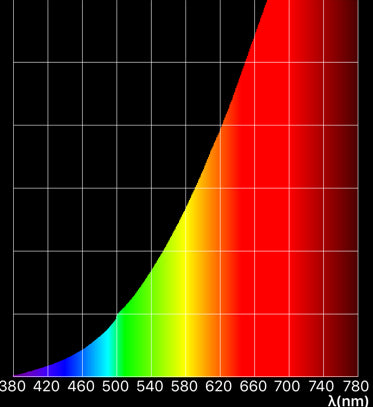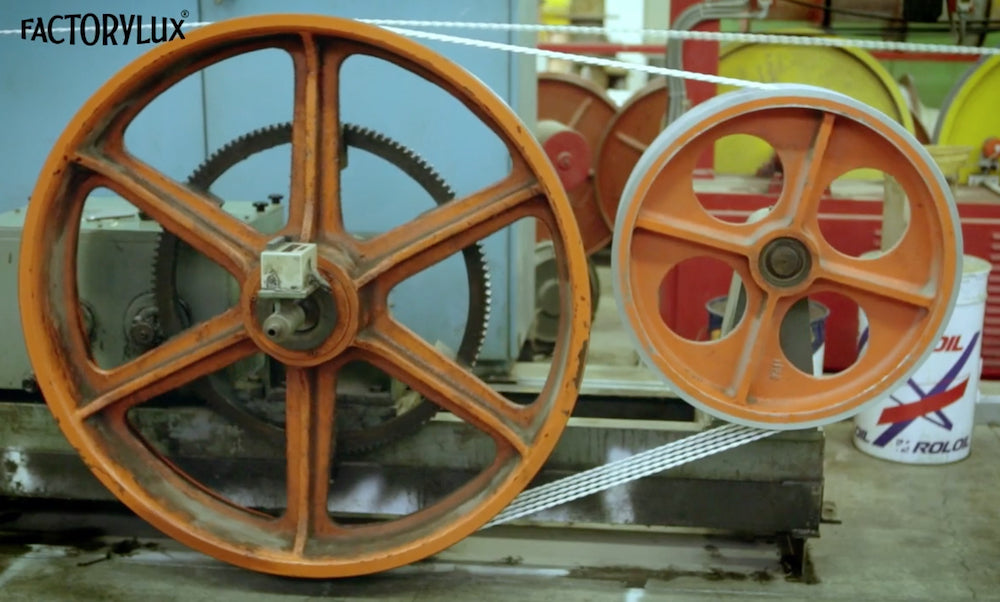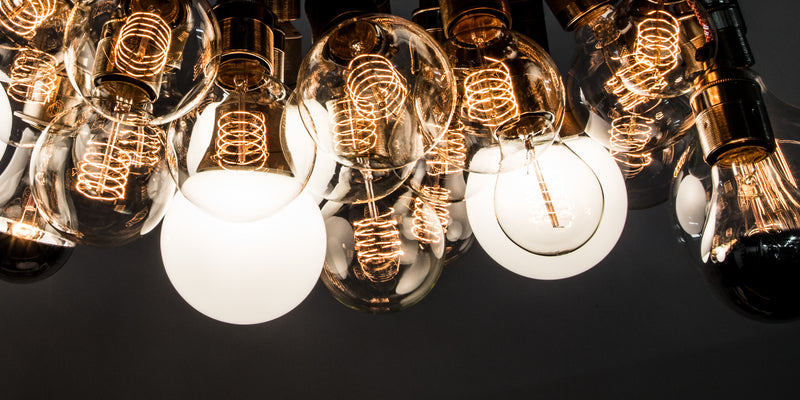Light is the visible part of the electromagnetic spectrum - those wavelengths of electromagnetic radiation that cause a visual sensation in humans. Visible light broadly falls between the 380 and 780 nanometre wavelengths. Light and vision are the primary methods by which humans perceive the world and how things look is a function of how they emit, reflect, refract, absorb or transmit light. If there is no light, nothing can be seen.
Light has a range of physiological and psychological effects which depend on its properties. Light which flashes or flickers can trigger photosensitive epilepsy. In addition to sunburn, exposure to sunlight can cause lupus or inflammation of the skin. Less critically, the colour temperature of light can affect mood - cooler colours are less inviting and warmer colours are more relaxing.
Light has a number of measurable properties and understanding these properties can help you light your home more effectively.
Luminous Power of a Light Source - Lumens (lm)
Luminous power (or luminous flux) is measured in lumens (lm) and indicates the total amount of light produced by a light source. A 60W filament bulb produces about 500 lumens. Many light bulbs will give the luminous power figure in lumens on the packaging.Luminous Power on a Surface or Area - Lux (lx)
Luminous power on a surface is measured in lux (lx) or lumens per m². One lux is equal to one lumen per square metre. Depending on the activity, lighting in the home should be in the 100 to 500 lx range. Social functions might require light levels below 100 lx and kitchen work surfaces more than 500 lx. The illumination of a surface depends on the number and power of the light sources, how the light from those sources is distributed - where it is directed - and, of course, how far the surface is away from the light source(s). One 800 lm light bulb in a central pendant light with a lamp shade to spread the light evenly can produce 150 lx on walls and floors which is sufficient for general lighting in a hallway.Correlated Colour Temperature - Kelvin (K)
The correlated colour temperature (CCT) is a measure of the warmth or coolness of a light source. It is measured in Kelvin (K). Overcast daylight (cold blue colours) may have colour temperature of around 7,500 K and an incandescent bulb (warmer orange colours) has a colour temperature of around 2,300 K. While human behaviour and emotions are, obviously, influenced by much more than the available light, the combination of CCT and overall illumination does have an affect on mood. Colder colours may produce greater levels of alertness while warmer colours - fire, sunsets, etc - are more relaxing.Colour Render Index - % value
The colour render index (CRI) value is an average measure of how well a light source renders colours compared to an ‘ideal’ light source known as a black body radiator. The maximum CRI figure is 100 (higher is better) and the figure is sometimes given on light bulb packaging. Traditional filament bulbs have a high CRI (around 98) which more energy efficient light sources (CFL and LED) have difficulty matching. The 'headline' CRI figure is based on an average from a series of individual test colour samples (TCS) or swatches and how well the light source renders those colours. The CRI number is based on the first eight sample colours (TCS01 to TCS08 or R1 to R8) and the average figure may ‘hide’ weaknesses in relation to a particular sample colour. The issue is avoided if the figure is given for individual reference samples.Flicker - % value
Electric light sources powered by an alternating current (AC) supply generally have a degree of flicker directly related to the frequency of the power source. Perception of flicker is a function of the frequency of the flicker and also the variation in light output. Generally, flicker is worse if a light source is effectively being switched on and off (like a strobe) rather than dimming and brightening over the cycle. Flicker above 75 Hz (cycles per second) is not noticeable by most people but can cause discomfort or cause visual effects when reading. The flicker percentage (lower is better) measures the degree of modulation of the light output over a single cycle.Conclusion
The next unit of Lighting 101 - Unit 2 Light Sources Explained - looks at the various light sources available for lighting your home (sunlight, incandescents, fluorescent and LED) and their properties.Forward to Unit 2 - Light Sources Explained →
Example values
The table below shows the values for four light sources - daylight (cloudy November afternoon sky), a filament light bulb (a Factorylux 40W squirrel cage filament pear), a fluorescent strip light, and a poor quality LED light bulb.|
Attribute |
Reference Colour |
Daylight (cloudy sky - November) |
Filament Light Bulb |
Fluorescent Strip Light |
Poor Quality LED Light Bulb |
|
CCT |
8,900 K |
2,300 K |
3,800 K |
||
|
CRI |
98.5 |
99 |
82 |
||
|
%Flicker |
0 |
0 |
0.3 |
||
|
R1 |
▅ |
98 |
99 |
98 |
|
|
R2 |
▅ |
99 |
99 |
90 |
|
|
R3 |
▅ |
99 |
98 |
51 |
|
|
R4 |
▅ |
97 |
99 |
89 |
|
|
R5 |
▅ |
98 |
99 |
87 |
|
|
R6 |
▅ |
99 |
98 |
77 |
|
|
R7 |
▅ |
98 |
99 |
89 |
|
|
R8 |
▅ |
97 |
99 |
74 |
|
|
R9 |
▅ |
91 |
98 |
15 |
|
|
R10 |
▅ |
98 |
98 |
47 |
|
|
R11 |
▅ |
97 |
99 |
76 |
|
|
R12 |
▅ |
98 |
96 |
48 |
|
|
R13 |
▅ |
98 |
99 |
97 |
|
|
R14 |
▅ |
99 |
99 |
67 |
|
|
R15 |
▅ |
97 |
99 |
95 |







Leave a comment
This site is protected by hCaptcha and the hCaptcha Privacy Policy and Terms of Service apply.